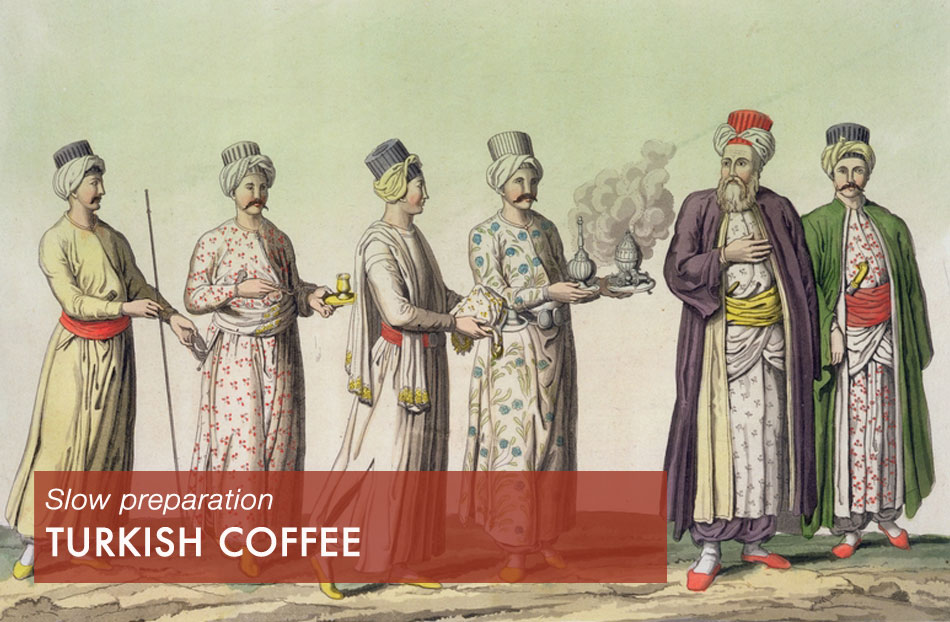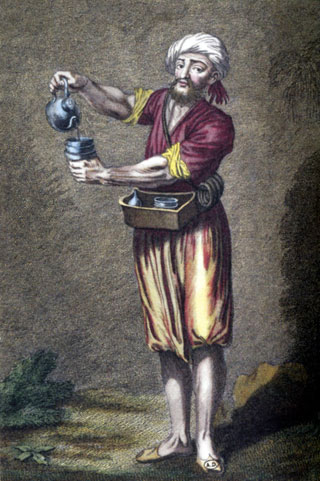

Charles de Ferriol and Gerard Scotin, Travelling Coffee Salesman, in Recueil de Cent Estampes Représentant Differentes Nations du Levant, 1707–1708. Private collection
Instructions on how to make Turkish coffee
Top: 'Servants bearing a pipe, a brazier, pastries, coffee and rose water', in The History of the Nations, 19th century. Private collection
From the Horn of Africa, the red fruits of the coffee plant travelled to Yemen across the Red Sea, and their use is documented in Mecca in the 15th century. However, it was in Turkey that coffee began to undergo several phases of processing.
Even today, after roasting, the beans are ground and the powder is prepared for use. Before reaching the coffee cup, the fine coffee powder is placed in the cezve (a tall copper receptacle with a long handle), where the water has already been brought to the boil and is then returned to boiling point together with the coffee. Poured into a metal jug called an ibrik, the mixture is then served in the respective cups and left to settle for a few minutes.
The traditional Turkish coffee cup is made from porcelain and was initially handleless. Since then, it has become common practice to place the porcelain cup in a close-fitting engraved metal (copper or brass) container with a handle and lid.

